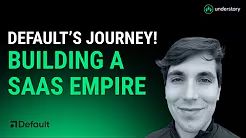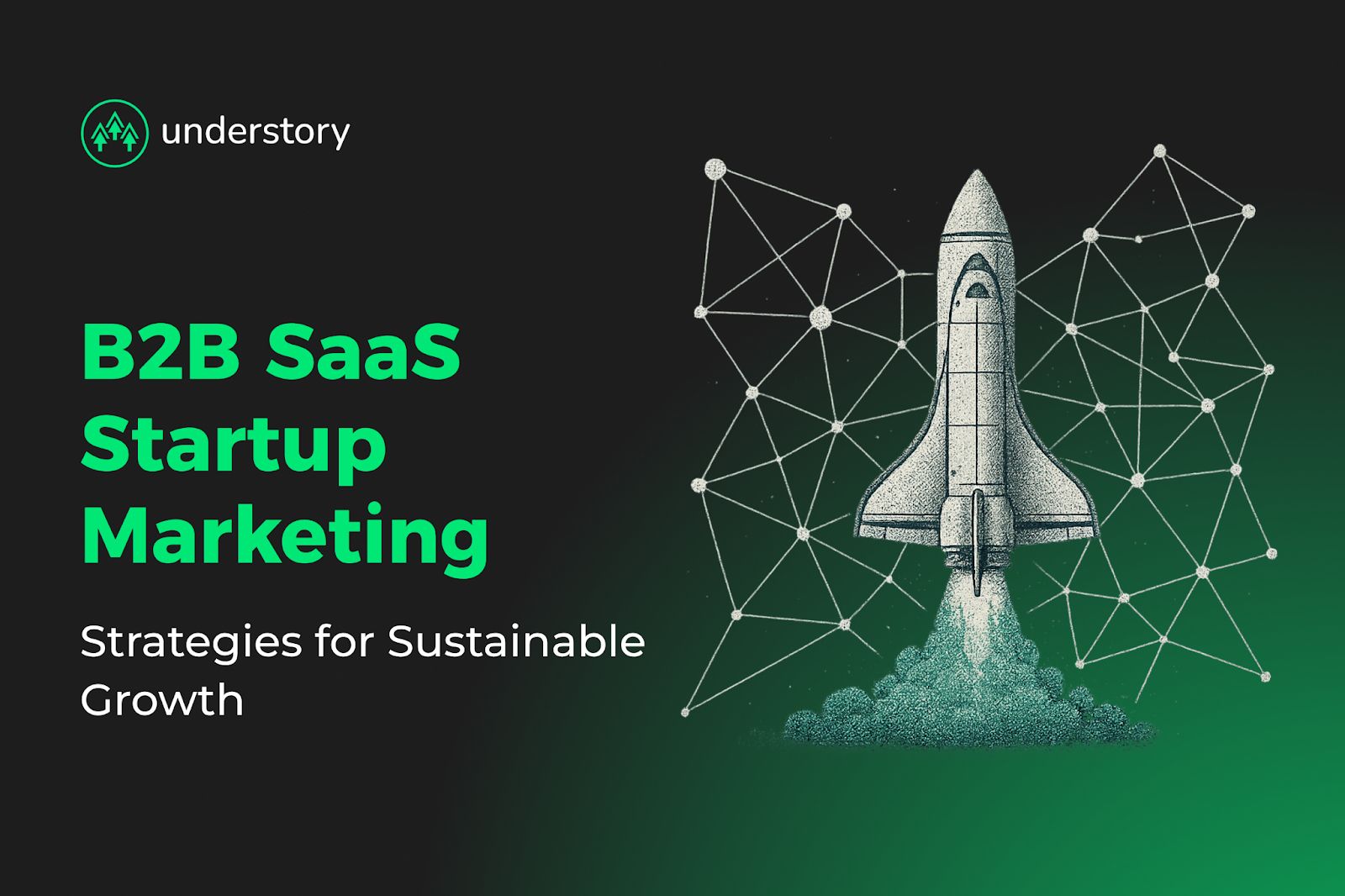
Understory Unfiltered: Santosh Sharan - From ZoomInfo to ZeerAI
Catch up on our Understory Unfiltered episode where Santosh Sharan shares why the same growth playbook never works twice and why two-thirds of SaaS companies will shut down.

Seven steps to effectively convert MQLs into SQLs.
Most B2B SaaS teams convert only a small percentage of their marketing-qualified leads (MQLs) into sales-qualified leads (SQLs), which are vetted and ready for direct engagement. This leaves many hard-won prospects stranded. For growth leaders coordinating paid media, outbound, and creative specialists, that drop-off translates into wasted spend, forecasting headaches, and end-of-quarter scrambles.
The root cause is often that marketing and sales operate on different definitions, different timelines, and different success metrics. When those worlds clash with minimal collaboration, pipeline efficiency nosedives.
This article provides a six-step playbook to close that gap with shared MQL and SQL criteria, disciplined lead scoring, strategic nurturing, and a seamless handoff process with closed-loop feedback.
Precise definitions stop the familiar tug-of-war where marketing celebrates the "pipeline" that sales quietly ignores. When teams share criteria, finger-pointing disappears and qualified prospects receive effective follow-up, making the most of paid media budgets and sales capacity.
An MQL represents early-stage intent through fit and engagement. Fit determines whether the person matches your ideal customer profile (ICP) in company size, industry, and job seniority. Engagement proves they've interacted deeply enough to show more than casual curiosity.
Your MQL checklist should include:
MQLs sit in awareness or interest stages. Guard against flooding the funnel with low-quality names.
An SQL crosses a higher bar: budget, authority, need, and timeline (BANT). The BANT framework ensures sales conversations start with substance:
When your marketing team sees these signals, automations in your CRM can auto-assign the lead. From there, your sales team responds within the SLA window and documents every disqualification reason, like "no budget," "competitor signed," "student researcher", so marketing can recalibrate scoring rules.
A scoring model filters noise and spotlights real buyers, giving sales confidence to act fast while you stop burning your budget on low-value conversations. Create your lead scoring model by considering several factors:
By combining these elements, which include clear criteria, effective scoring, and strategic nurturing, you create a robust foundation for the final critical steps in converting MQLs to SQLs.
A structured nurture program eliminates coordination overhead by systematically moving interested visitors toward sales-ready status. Rather than managing disconnected touchpoints across multiple specialists, you can create automated pathways that respond to prospect behavior.
Each step builds on the previous one to create nurture programs that feel personalized rather than automated.
Create distinct nurture workflows based on two variables: company fit and behavioral intensity. A 500-person enterprise software firm that attended your webinar needs a different sequence than a 50-person startup that downloaded a single guide. Here’s an example four baseline tracks to start:
Tag leads in your CRM with both dimensions so your automation platform routes them correctly. Update track assignments weekly as engagement scores change.
Match each touchpoint to where prospects sit in their evaluation process:
Audit your content library by stage, identify gaps, then create a routing matrix that connects lead score ranges to specific asset sequences. For example, leads scoring 40-60 points receive awareness content, 61-80 get consideration assets, and 81+ trigger decision-stage sequences with sales alerts.
Set up behavioral triggers that modify nurture cadence automatically. For instance:
Define five critical trigger events in your CRM that warrant immediate sequence changes: pricing page visits, case study downloads, competitor comparison searches, demo page abandonment, and email reply rates above 40%. Each trigger should route prospects to higher-urgency workflows or direct sales outreach.
Measure how quickly leads progress through score thresholds:
Build a weekly scorecard tracking three velocity indicators:
Use this data to retire low-performing sequences and double down on high-velocity pathways.
Build a unified, real-time tech stack designed for moving prospects to SQLs without friction. The right combination of CRM, enrichment, attribution, and automation tools can reduce coordination overhead while accelerating qualification velocity. Below are examples of tools we use at Understory to manage lead qualification and improve conversion rates for our clients.
CRMs like HubSpot and Salesforce can centralize every touch, score, and status so both teams work from identical data. When your CRM automatically flags a lead as "SQL" the instant it meets threshold criteria, sales can strike while intent is hottest.
HubSpot works well for mid-market SaaS teams with built-in scoring and workflow automation. Salesforce provides enterprise-grade tracking, and OutboundSync can push multi-channel activity directly into records for complete attribution visibility.
Clay can serve as your enrichment engine, automatically pulling firmographic details, job titles, verified emails, and LinkedIn profiles for every contact. Clay's List Building Mode compiles leads from 100+ data sources, then Enrichment Mode fills missing details.
Supplement Clay with Wiza for LinkedIn verification, LeadMagic for enterprise contact accuracy, IcyPeas for verified email discovery, or Prospeo for gap-filling. Complete data prevents false negatives from incomplete profiles.
Fibbler can close the attribution gap between LinkedIn ads and CRM data while powering outbound-to-paid workflows. When prospects engage with ads but don't convert, Fibbler tracks engagement and triggers personalized outbound sequences automatically.
Combined with Clay and HubSpot, Fibbler reveals the complete buyer journey across touchpoints. Without cross-channel attribution, marketing credits only the last touchpoint while sales assumes leads were cold outbound.
Looker Studio can pull data from your ad platforms into unified dashboards showing spend, performance, and trends. Porter Metrics automates the pipeline, feeding LinkedIn, Meta, Google Ads, and CTV data directly into Looker Studio for real-time updates.
Build dashboards tracking MQL volume by source, SQL conversion rates by campaign, time-to-SQL by nurture track, and influenced pipeline value. This visibility eliminates coordination overhead while ensuring both teams optimize toward SQL generation.
Marketing automation tools can handle progressive profiling, lead scoring updates, and nurture sequences that adapt to engagement. Instantly powers email campaigns with inbox warm-up and A/B testing, automatically pausing sequences when leads hit SQL thresholds.
HeyReach can handle parallel LinkedIn campaigns across multiple accounts. Make.com or n8n connect your CRM, enrichment tools, and outreach platforms so Clay enriches leads, HubSpot updates scores, and automated workflows trigger appropriate sequences based on behavior.
When these systems integrate properly, lead qualification can run on autopilot while both teams maintain complete visibility. Connect attribution on Fibbler, enrichment on Clay, automation from Make.com, and your CRM so data flows bidirectionally without manual exports.
Set up webhooks and API connections that update in real time, not nightly batches. A prospect's LinkedIn ad click could enrich their CRM record, update their lead score, and trigger outbound sequences within minutes rather than waiting hours.
When these systems integrate properly, your lead qualification runs on autopilot while both teams maintain complete visibility into prospect behavior and pipeline progression.
Pin down the metric you and your sales counterpart will track. Conversions can be tracked using the formula: SQLs ÷ MQLs × 100. For instance, 40 SQLs from 200 prospects equals 20%. Compare your number to industry averages to see if you're keeping pace or leading the pack.
Build a lightweight dashboard in Google Sheets or your CRM's reporting module to easily review performance over time, tracking three data tiers:
Segment every view by channel, campaign, and lead source since a 30% rate from webinars versus 10% from paid social requires different optimization approaches. Focus on trends over isolated snapshots. For instance, a steady climb from 14% to 18% over three months proves your scoring adjustments work, even before you reach that high-performer threshold.
SaaS growth teams that stop optimizing their conversion engine watch efficiency slide within quarters. Regularly review the process and performance to make small adjustments and maintain strong conversion rates.
Schedule quarterly closed-won analysis sessions where you compare the attributes of deals you actually closed against your current lead-scoring weights to spot score inflation or blind spots. Your quarterly review agenda should answer four questions:
Based on your findings, adjust the model, publish new thresholds, and automate them in your CRM. Use HubSpot workflows or Salesforce automation to implement new scoring rules immediately after quarterly reviews, ensuring updated thresholds route leads properly without manual intervention. Connect your CRM to analytics platforms like Looker Studio to track score performance continuously between quarterly reviews, catching significant drift before it damages conversion rates. This regular calibration prevents the gradual decay that kills conversion rates in high-growth SaaS environments.
Run disciplined experiments every sprint by A/B testing subject lines, nurture cadences, and demo-request CTAs. Tie each test to a single hypothesis so results drive clear decisions.
Use a lightweight tracker that anyone can scan in 30 seconds:
| Test | Hypothesis | Metric | Result | Next Step |
|---|---|---|---|---|
| "Value vs. Feature" email subject | Value-led copy lifts open rate | Open rate | +6% | Roll out to all nurture streams |
Systematic testing turns lead qualification into a compounding system that improves conversion rates quarter over quarter rather than degrading as your market and buyers evolve.
During weekly pipeline syncs, sales shares qualitative feedback on why specific SQLs progressed or stalled. That real-world context feeds your next experiment queue and keeps both teams aligned on outcomes. Formalizing these touchpoints inside your SLA eliminates the coordination overhead that consumes strategic growth time.
The conversion gap between MQLs and SQLs often stems from coordination challenges, like disconnected paid media campaigns, inconsistent outbound messaging, and creative that doesn't align across touchpoints. When prospects encounter fragmented experiences from separate specialists, conversion rates suffer.
Understory eliminates this coordination overhead through integrated allbound expertise. Our strategic paid media management uses advanced audience enrichment and conversion tracking to identify high-intent prospects. Clay-powered workflows automatically trigger personalized outbound sequences when prospects engage with ads but don't convert immediately. Professional creative direction ensures consistent messaging across every touchpoint.
We also handle the technical foundation for coordinated lead qualification, including CRM enrichment for accurate lead scoring, real-time analytics dashboards across all channels, and cross-channel attribution that connects paid engagement to outbound conversions. Your team gets unified reporting showing which coordinated touchpoints drive SQLs, not fragmented data from separate specialists.
Book a call with our team to see how coordinated paid media, outbound, and creative execution can improve your MQL-to-SQL conversion rates.

Catch up on our Understory Unfiltered episode where Santosh Sharan shares why the same growth playbook never works twice and why two-thirds of SaaS companies will shut down.

Catch up on our Understory Unfiltered episode with Nico, founder and CEO of Default, on building a unified go-to-market platform

Coordinate paid media, outbound, and creative under one playbook for predictable SaaS pipeline.

Why outsourced lead generation fails and how to avoid the coordination trap.